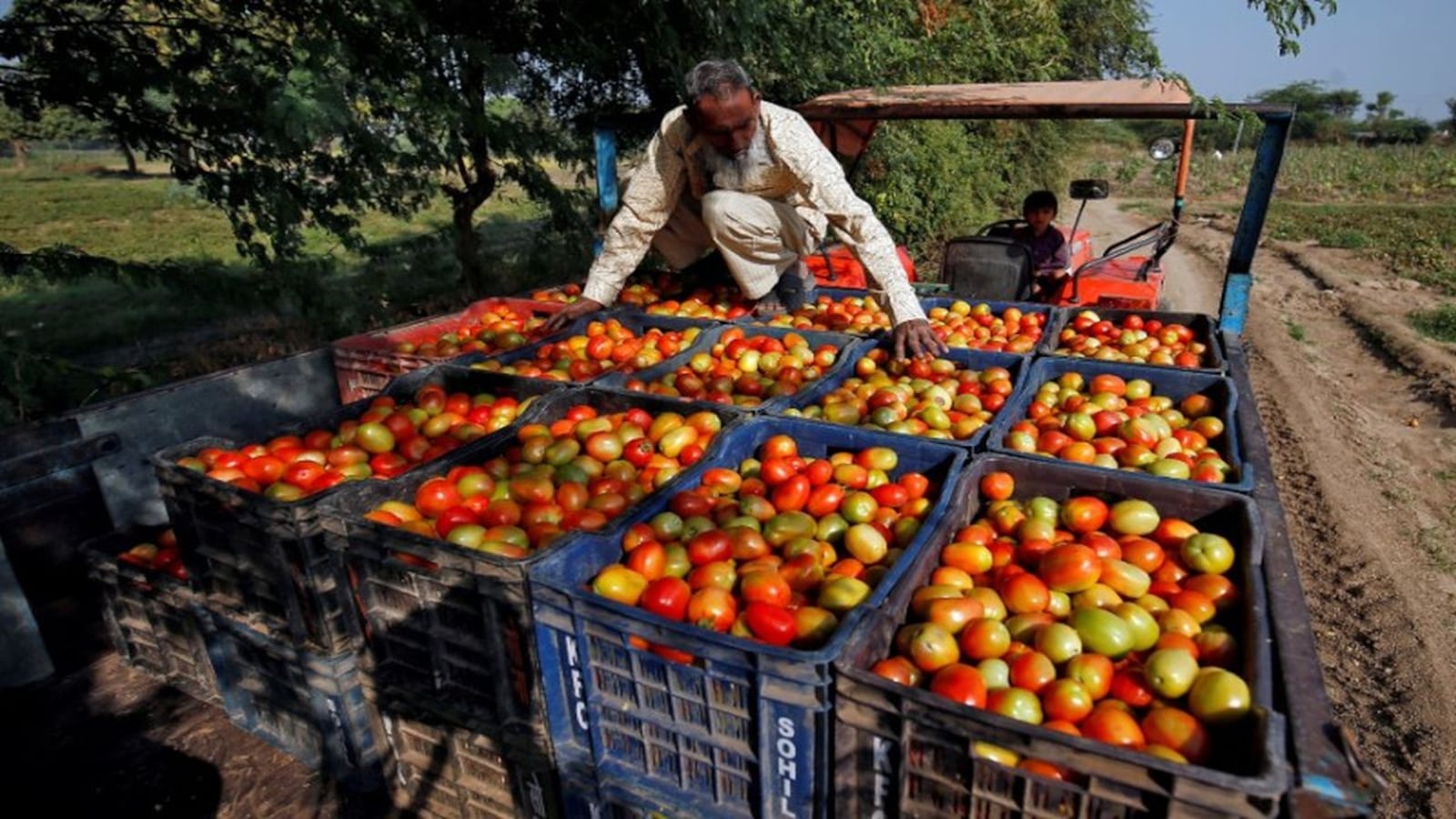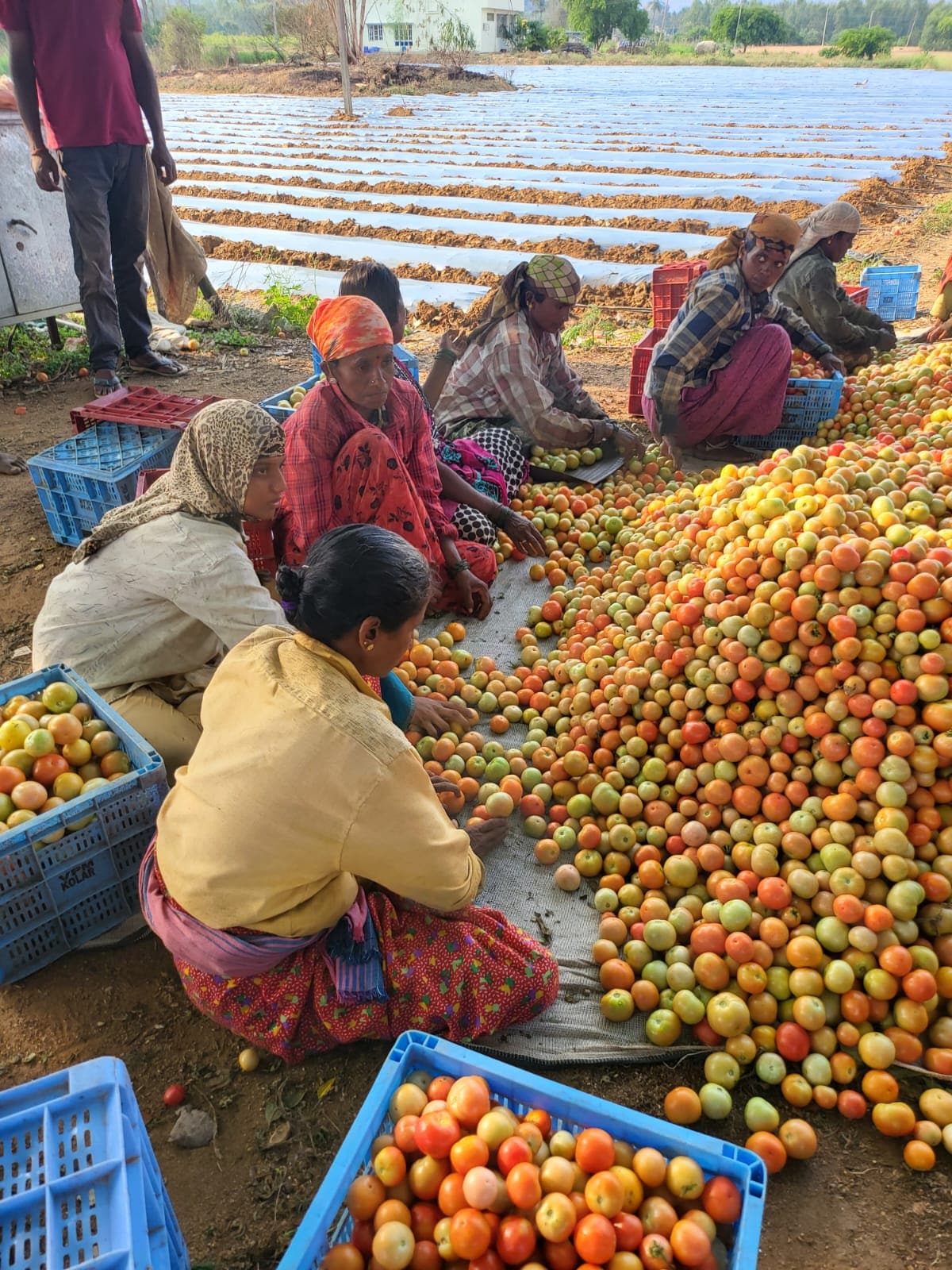Tomato Prices to Moderate in 2 Weeks with New Crop Arrivals 2023

Tomato Prices to Moderate in 2 Weeks with New Crop Arrivals 2023
The average retail price for the common vegetable is between Rs 160 and Rs 170 per kilogramme in most locations.
As arrivals from important producing states like Maharashtra and Karnataka start-up, consumers feeling the squeeze of high tomato prices since the final week of June might get some relief in the coming two weeks.

The average retail price for the common vegetable is between Rs 160 and Rs 170 per kilogramme in most locations. The market will start receiving a massive influx of crops from Maharashtra and Karnataka, which account for 17% of production.
The Department of consumer affairs predicted that greater output from Karnataka, Maharashtra, Tamil Nadu, Telangana, and Himachal Pradesh would cause tomato production to rise to 0.54 million tonnes (MT) this month from 0.22 MT in July. According to Rohit Kumar Singh, secretary of the Department of Consumer Affairs, “We anticipate tomato retail prices to start declining from next week.”
According to Ashok Kaushik, president of the Azadpur Market Tomato Association, “mandi prices are currently ranging between Rs 120 and 130/kg, and are anticipated to decline as there are reports of higher crops arriving from the south and western parts of the country in the next one week.”
In July, excessive rains and floods in the north, northwest, and hilly regions damaged fields and crops, reducing the availability of tomatoes and driving up retail prices in the Delhi market to more than Rs 200/kg.
According to the consumer affairs department, the vegetable’s regular retail price was Rs 140/kg on Tuesday, although prices have varied widely between towns. Prices were listed at Rs 177/kg in Delhi and Rs 165/kg in Mumbai, respectively.

The authorities estimated tomato imports from Himachal Pradesh to have decreased from 10,875 tonnes in July of last year to just 1,505 tonnes in July.
At Kolar, Karnataka, the benchmark mandi price for tomatoes dropped by 28% on Monday to Rs 6,670/quintal from its peak of Rs 9,330/quintal on August 1. Mandi rates were barely Rs 2,000/quintal at the beginning of June.
According to Uday Deolankar, advisor to the Maharashtra agriculture department, “Arrivals would peak up over the new weeks, which would pull down the prices from a record high.” However, he predicted that prices would moderate over the next two weeks before dropping precipitously by October when the harvest from Madhya Pradesh entered the market.
Since the middle of last month, numerous locations in Delhi NCR, Bihar, Uttar Pradesh, and other states have been selling tomatoes for the retail price of Rs 70/kg, thanks to the efforts of the National Cooperative Consumers Federation (NCCF) and farmers’ cooperative Nafed.
The production of tomatoes in the nation is shared by around 18 states, including Madhya Pradesh, Gujarat, Maharashtra, Chhattisgarh, Odisha, West Bengal, Telangana, Karnataka, Tamil Nadu, and Punjab. The year 2022–2023 (July–June) saw a slight decrease in tomato output, falling to 20.62 MT. Tomatoes account for 0.6% of the CPI inflation weighting.
An official statement claims that the variance in tomato price seasonality between regions and the cycle of planting and harvesting seasons are the leading causes.

Tomatoes, a staple in cuisines globally, play a pivotal role in the agricultural and economic sectors. Fluctuations in tomato prices impact consumers and create a ripple effect on farmers, traders, and related industries. This article examines the imminent price moderation expected in the next fortnight due to the new crop arrivals in 2023.
Over the past few months, the prices of tomatoes have witnessed an unprecedented spike. Several factors have contributed to this hike:
Erratic Weather Conditions: Unpredictable weather patterns in the primary tomato-growing regions hindered growth and decreased yield.
Supply Chain Disruptions: The ongoing effects of global disruptions have impacted the supply chain, causing delays in transport and increasing costs.
Increased Demand: With the return of many global economies to near-normalcy post-pandemic, the demand for tomatoes has surged in both domestic and international markets.
However, as with the cyclical nature of agricultural commodities, relief is on its way. Tomato farmers are eagerly awaiting the new crop of 2023
This year’s tomato plants have been reported to be healthier and more robust, potentially leading to a higher yield.
Advancements in farming techniques and a focus on sustainable agriculture promise higher quantity and a better quality of tomatoes. The last few weeks have seen a stable climate conducive to tomato growth.
With the influx of the new crop, the market is poised to witness:
Stabilization of Prices: As supply meets demand, prices are expected to stabilize, relieving consumers.
Boost for Farmers: While consumers rejoice over decreased prices, the higher yield ensures that farmers do not face a drastic dip in income. Instead, they can expect consistent, if not increased, revenue streams.
Ripple Effect on Associated Industries: Restaurants, caterers, and food processing industries that rely heavily on tomatoes can anticipate reduced operational costs.

The anticipated moderation in tomato prices with the upcoming crop arrivals in 2023 serves as a testament to the resilience of the agricultural sector. Despite facing challenges, equilibrium can be restored with the right mix of nature’s benevolence and human innovation.
This ensures that the consumer gets access to affordable commodities and that the farmer’s labour bears fruit. The following two weeks are crucial; all eyes are on the market to see how it responds.




